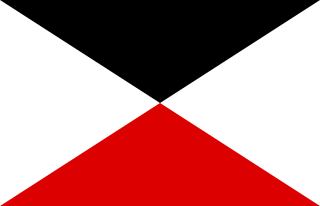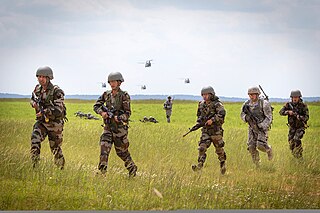 W
W1st Gorkha Rifles , often referred to as the 1st Gorkha Rifles, or 1 GR in abbreviation, is the seniormost Gorkha infantry regiment of the Indian Army. It was originally formed as part of the East India Company's Bengal Army in 1815, later adopting the title of the 1st King George V's Own Gurkha Rifles , however, in 1947, following the partition of India, it was transferred to the Indian Army and in 1950 when India became a Republic, it was redesignated as 1st Gorkha Rifles . The regiment has a long history and has participated in many conflicts, including many of the colonial conflicts prior to Indian independence, as well as the First and Second World Wars. Since 1947 the regiment has also participated in a number of campaigns against Pakistan in 1965 and 1971 as well as undertaking peacekeeping duties as part of the United Nations.
 W
WThe 2nd King Edward VII's Own Gurkha Rifles was a rifle regiment of the British Indian Army before being transferred to the British Army on India's independence in 1947. The 4th Battalion joined the Indian Army as the 5th Battalion, 8th Gorkha Rifles, where it exists to this day. As part of the British Army, the regiment served in Malaya, Hong Kong and Brunei until 1994 when it was amalgamated with the other three British Army Gurkha regiments to form the Royal Gurkha Rifles. It is the only Gurkha regiment which did not have a khukuri on its cap badge.
 W
WThe 3rd Gorkha Rifles or Third Gorkha Rifles, abbreviated as 3 GR is an Indian Army infantry regiment. It was originally a Gurkha regiment of the British Indian Army formed in 1815. They were present at a number of actions and wars including the Siege of Delhi in 1857 to the First and Second World Wars. After the Partition of India in 1947 the regiment was one of the six Gorkha regiments transferred to the Indian Army as part of the Tripartite Agreement signed between India, Nepal and Britain at the time of Indian independence. Prior to independence, the regiment was known as the 3rd Queen Alexandra's Own Gurkha Rifles. In 1950 the regiment's title was changed to 3rd Gorkha Rifles. Since 1947 the regiment has participated in a number of conflicts including the 1947 and 1971 wars against Pakistan.
 W
WThe IV Army Corps / IV AK was a corps level command of the Prussian and then the Imperial German Armies from the 19th Century to World War I.
 W
WThe 4th Regiment of Line Infantry was a military unit of the Kingdom of Poland. Formed in 1815, the regiment distinguished itself in the battles of the November Uprising and remains one of the best-known units of the Polish Army of the era. The soldiers of the regiment are known in Polish historical works as the Czwartacy.
 W
WThe V Army Corps / V AK was a corps level command of the Prussian and then the Imperial German Armies from the 19th century to World War I.
 W
WThe VI Army Corps / VI AK was a corps level command of the Prussian and then the Imperial German Armies from the 19th Century to World War I.
 W
WThe VII Army Corps / VII AK was a corps level command of the Prussian and then the Imperial German Armies from the 19th Century to World War I.
 W
WThe 7th Infantry Brigade and Headquarters East is a formation in the British Army with a direct lineage to 7th Armoured Brigade and a history that stretches back to the Napoleonic Wars. It saw active service in the Crimean War, the Second Boer War and both the First and the Second World Wars. In 2014, the 7th Armoured Brigade was re-designated as 7th Infantry Brigade, thereby ensuring that the famed "Desert Rats" continue in the British Army's Order of battle.
 W
WThe VIII Army Corps / VIII AK was a corps level command of the Prussian and then the Imperial German Armies from the 19th Century to World War I.
 W
WThe Army of the North or Armée du Nord is a name given to several historical units of the French Army. The first was one of the French Revolutionary Armies that fought with distinction against the First Coalition from 1792 to 1795. Others existed during the Peninsular War, the Hundred Days and the Franco-Prussian War.
 W
WThe Division of Royal Volunteers was a detachment of the Portuguese military, formed in 1815 and deployed to Rio de Janeiro on 30 March 1816. The unit was commanded by Carlos Frederico Lecor, Viscount of Laguna.
 W
WThe Dutch Grenadiers were a French Imperial Guard regiment during the Napoleonic Wars. They were originally formed out of Louis Bonaparte's royal guard in the Kingdom of Holland.
 W
WSince the independence of India in 1947, as per the terms of the Britain–India–Nepal Tripartite Agreement, six Gorkha regiments, formerly part of the British Indian Army, became part of the Indian Army and have served ever since. The troops are mainly from ethnic Gorkha community of Nepal. They have a history of courage in battle, evident from the gallantry awards won by Gorkha soldiers and battle honours awarded to Gorkha both before and after joining the Indian Army. They carry their signature, a Kukri knife with them. A seventh Gorkha Rifles regiment was re-raised in the Indian Army after Independence to accommodate Gorkha soldiers of 7th Gurkha Rifles and the 10th Gurkha Rifles who chose not to transfer to the British Army.
 W
WThe Guards Cuirassiers were a heavy cavalry regiment of the Royal Prussian Army. Formed in 1815 as an Uhlans regiment, it was reorganized as a cuirassiers unit in 1821. The regiment was part of the Guards Cavalry Division and fought in the Second Schleswig War, the Austro-Prussian War, the Franco-Prussian War and World War I. The regiment was disbanded in September 1919.
 W
WThe Hohenlohe Regiment was an infantry regiment of the French Army established after the abdication of Napoleon I. It consisted of foreign soldiers who wished to continue in French service under the restored monarchy. The regiment was raised, named after and commanded by Louis Aloysius, Prince of Hohenlohe-Waldenburg-Bartenstein, a German prince and Marshal of France.
 W
WThe Indies Brigade or Indian Brigade, also referred to as the Dutch Indies Brigade or Netherlands Indies Brigade, was a short-lived Dutch-Belgian military unit which took part in the Waterloo Campaign and subsequent invasion of France in 1815.
 W
WLife Regiment Grenadiers, also I 3, was a Swedish Army infantry unit that was active in various forms 1815–2000. The unit was based in Örebro Garrison in Örebro and belonged to the King's Life and Household Troops until 1974.
 W
WThe Life Regiment Hussars is one of Europe's most victorious military regiments and one of the world's oldest regiments still active. The regiment descends directly from units set up by King Gustav I of Sweden in 1536, when Sweden set up a draft of horses and men north and south of Stockholm. The regiment was very active in the 1600s and 1700s and helped win several key battles for Sweden on the European continent. Today, the regiment plays a central role in the Swedish Armed Forces and is the most active regiment in Swedish military international engagements.